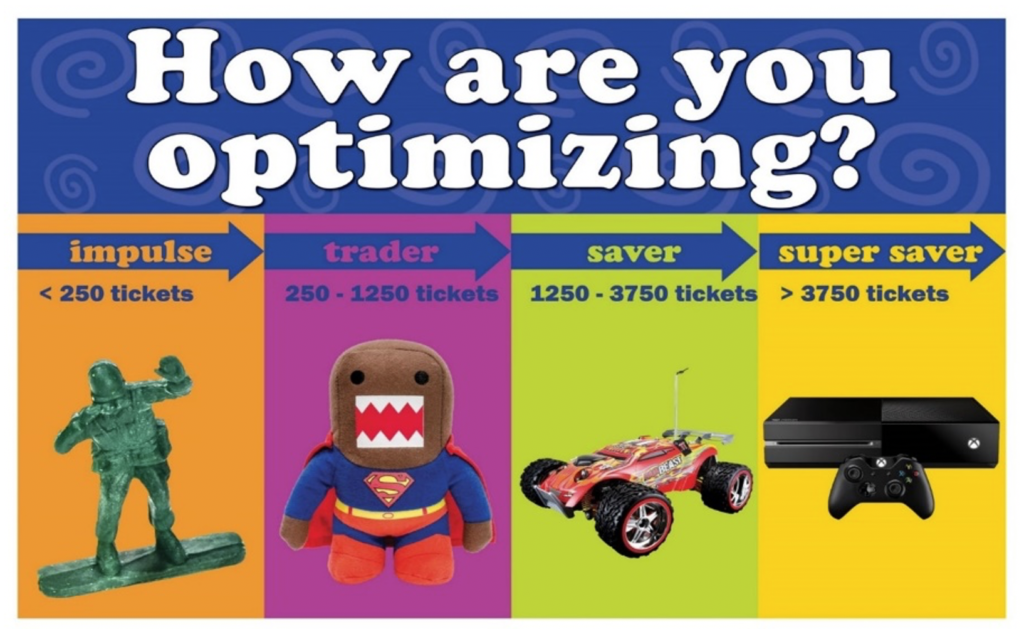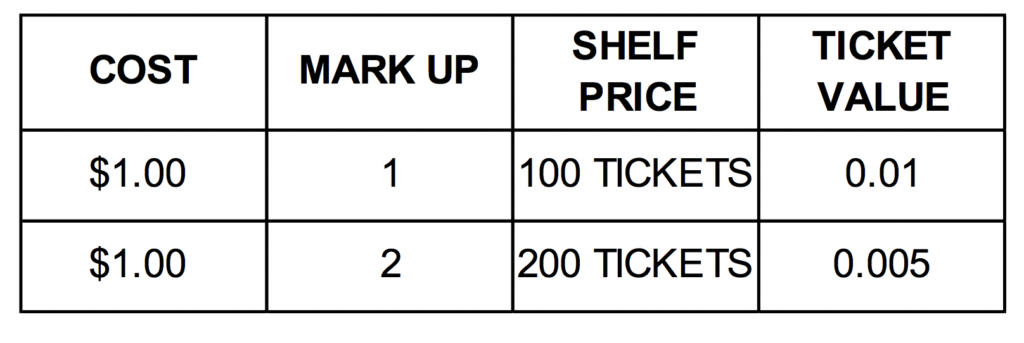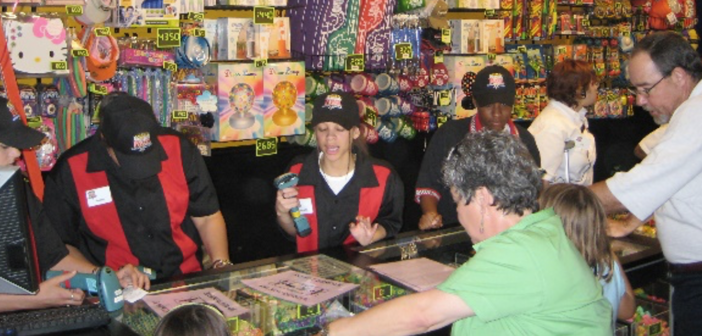Doing Redemption Right
It’s Complicated But Worth It

George McAuliffe
By George McAuliffe, President, Pinnacle Entertainment Group
The theme this month in RePlay is redemption, a subject very close to my heart. Redemption saved our industry starting in 1983. I was there when our company rolled in our first Skee-Ball. As we figured out the merchandise mix and customer appeal, success grew. Manufacturers popped up catering to the growing redemption shift in arcades. Then, when the modern-day crane hit the market in 1986 or so, we were off to the races.
Today, the arcade business has never been better and redemption, along with cranes and merchandisers, are the reason. In the 88 client locations we track, they account for 80-85% of sales.
Despite this success –– or maybe because of it –– there is a lot of confusion around operating principles. We deal with a lot of centers that are customers of our clients Rhode Island Novelty and Redemption Plus, and our job is to help their customers with operational questions. In the course of that effort, we constantly see operational errors or omissions that leave money on the table.]
Prize Selection
I’ve had several conversations recently which had some version of “the business is about the low-ticket items…that’s what drives sales.” The corollary of this is “we primarily appeal to kids.” Well, no. In most locations, that’s just not right. This (incorrect) conclusion results from focusing on the number of items redeemed in a week. Sure, low-ticket items will be a huge percentage of items redeemed, but so what?
The focus should be on the dollar value of the items redeemed. We break the items redeemed down into four cost ranges which roughly correspond with our four main player types: Impulse (low ticket items), Trader (next level up), Saver (higher ticket values requiring multiple visits), and Super Saver (highest ticket value prizes). We divide the total cost of each range by our cost of sales percentage. The result always shows that the distribution of prizes by dollar value is roughly equal for each group.
This means that each group is driving a roughly equal amount of arcade spending in the arcade. Prize assortment should be designed to appeal to all groups! And, by the way, Savers and Super Savers are, by definition, repeat customers. Appealing to that group will pay dividends in other areas of your business.
 Cost of Sales & Payout
Cost of Sales & Payout
I must have had a thousand conversations on this subject over the years and there is no area more misunderstood in the world of redemption. Payout is the dollar purchasing power of tickets (or prizes in the case of cranes) won divided by the sales of the game. The area of confusion is in determining the dollar value of each ticket. There are some in our industry who assign ticket value at a “penny a point,” which is a .01 cent value per ticket. We reject that thinking.
We call our method “reality based” ticket value. Almost everybody “marks up” their merchandise cost. If we assign a markup of 2 to our merchandise cost, a $1.00 item will go on the shelf at 200 tickets. If it takes 200 tickets to redeem an item that cost $1.00 then reality sets the ticket value at .005 or ½ cent ($1.00/200= .005). One of the things we want to know when we look at our payout is what is the value we are giving to our guests. Reality-based ticket pricing tells you that instantly, while the penny-a-point method overstates reality.
Since Cost of Sales is always reality-based when it hits the P&L, understanding the relationship between payout (tickets out of the games) and cost of sales (prize value redeemed across the counter) is a great management tool.
A key function in the management of redemption is understanding and optimizing the value we are giving to our guests. For the community based FEC, as opposed to tourist areas, getting the customer back is the Holy Grail of redemption management. Each additional visit we can generate from a single guest is more profitable than the last. Set your payouts too low and you reduce the fun factor and value equation for the guest.
Overly high payouts have been shown to be negative, too. There is a point at which guests “hit their number” and don’t play as much. In those cases, extra-high payouts flow to high cost of sales which comes right off the bottom line.
Revenue vs. Game Play Sales
Revenue vs. Game Play Sales can be another source of confusion. Revenue is straight sales dollars, often known as “Cash Sales,” in player card systems although it also includes credit card purchases. “Game Play Sales” (GPS) is the dollar value of cash credits and bonus credits combined. Most card systems offer the ability to provide bonus play, usually at higher price points, to incentivize spending and that is included in GPS.
We analyze game payout mainly as the value out to the customer and cost of sales from the financial perspective. As a result, we measure payout against Game Play Sales (we want the customer to have a consistent reward for each play regardless of whether it is a cash or bonus play). We measure Cost of Sales as a percentage of Revenue. That’s the financial result we need to understand.
I hope this cuts through some of the confusion. If you have any questions, you can reach me at georgemc@ grouppinnacle.com.
George McAuliffe has helped hundreds of businesses large and small develop and execute arcades and FECs. He has personally operated family entertainment centers from 2,000 to 150,000 square feet as a corporate executive, entrepreneur and consultant. He is the owner, with his partner and son Howard, of Pinnacle Entertainment Group.
George lives on the Jersey Shore with his wife, Julie. They have three sons, two daughters-in-law and a grandson.
Readers can learn more about Pinnacle at grouppinnacle.com or contact George at [email protected]; phone: 314-422-7197.




